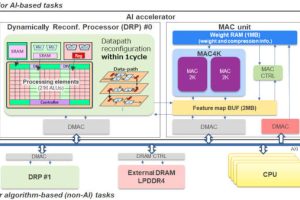The AI can also make referral and treatment recommendations.
 “Macular degeneration and diabetic macular edema are the two most common causes of irreversible blindness but are both very treatable if they are caught early,” said University of California San Diego opthalmologist Professor Kang Zhang. “Deciding how and when to treat patients has historically been handled by a small community of specialists who require years of training and are concentrated mostly in urban areas. In contrast, our AI tool can be used anywhere in the world, especially in the rural areas.”
“Macular degeneration and diabetic macular edema are the two most common causes of irreversible blindness but are both very treatable if they are caught early,” said University of California San Diego opthalmologist Professor Kang Zhang. “Deciding how and when to treat patients has historically been handled by a small community of specialists who require years of training and are concentrated mostly in urban areas. In contrast, our AI tool can be used anywhere in the world, especially in the rural areas.”
The platform looked at >200,000 OCT images.
Earlier studies have used machine learning to study retinal images, but the researchers claim they have gone a step further by using ‘transfer learning’ – a type of machine learning in which general knowledge related to classification can be transferred from one disease area to another and can enable the AI system to learn with a smaller dataset than traditional methods.
The researchers added occlusion testing to understand some of the algorithm’s method.
“Machine learning is often like a black box, where we don’t know exactly what is happening,” said Zhang. “With occlusion testing, the computer can tell us where it is looking in an image to arrive at a diagnosis, so we can figure out why the system got the result it did. This makes the system more transparent and increases our trust in the diagnosis.”
Agorithm-based diagnoses were compared with those from five ophthalmologists who reviewed the scans.
“With simple training, the machine could perform to the level of a well-trained ophthalmologist. It could generate a decision on whether or not the patient should be referred for treatment within 30 seconds and with more than 95% accuracy,” claimed Zhang.
The same technique was applied to chest X-rays of childhood pneumonia, and the computer was able to determine the difference between viral and bacterial pneumonia with greater than 90% accuracy, according to the University – viral pneumonia is treated mainly with supportive care, while bacterial pneumonia can have antibiotic treatment.
According to Zhang, it has other potential applications, such as distinguishing between cancerous and non-cancerous lesions on CT scans or MRIs. His group has made its data and tools open-source so that other groups can use it.
“If we all work together as a community, we can develop better and better tests with higher computational power,” he says. “The future is more data, more computational power, and more experience of the people using this system, so that we can provide the best patient care possible, while still being cost effective.”
Results from the US and Chinese team are published as ‘Identifying medical diagnoses and treatable diseases by image-based deep learning‘ in the journal Cell.
 Electronics Weekly Electronics Design & Components Tech News
Electronics Weekly Electronics Design & Components Tech News



